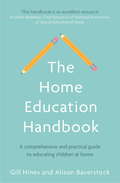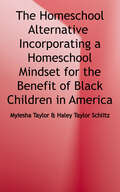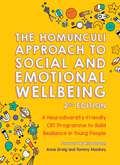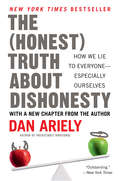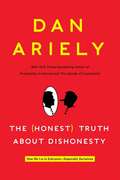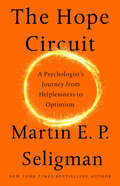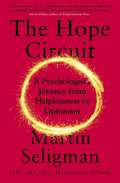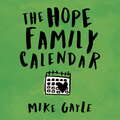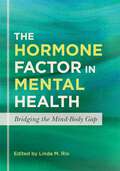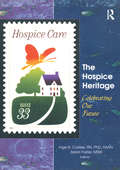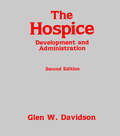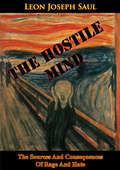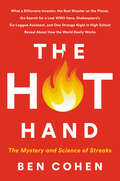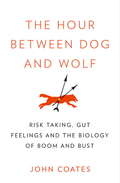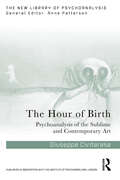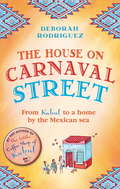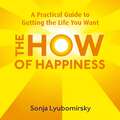- Table View
- List View
The Home Education Handbook: A comprehensive and practical guide to educating children at home
by Alison Baverstock Gill Hines'Home-educators want to provide a high quality learning experience for their children and this handbook is an excellent resource for making this aspiration a reality' - Dr Adam Boddison, Chief Executive of National Association of Special Educational NeedsIf you are thinking of home educating your child, your initial surprise may be at how easy it is to turn intention into reality. Once you have deregistered your child, you are largely left to get on with delivering education from home, as you see best. This book is full of practical guidance for parents, based on the authors' long experience of working with children and young people; their parents, teachers and schools. It will help you plan what is taught, as well as when and how. The authors not only consider how to benefit from the opportunities home education provides, but also suggest creative ways to fill the potential gaps that might arise from not being part of the traditional school system. The Home Education Handbook covers everything from the socialisation of home-educated children to advice on supporting the motivation and resilience of all involved. This is a book that every parent who is considering home education or flexi-schooling, or is simply keen to ensure that their child gets the best education possible, needs to read.
The Homecoming
by Russel O'NeilTHEY SHOULD NEVER HAVE DONE THIS TO HIM. NOT EVER.... Josh and Jessica Mo'gan had everything. A beautiful home in Beverly Hills. Glamorous friends. Glittering parties. And Jeff, the bright, beautiful twelve-year-old son. But Jeff was different. He lived in a tree-house world of his own, a world he jealously guarded against every intrusion. Jeff awoke one morning to find himself a psychiatric patient in exclusive Rosedale Hospital. His rage made him tremble. That was when Jeff knew his parents would have to pay. THEY HAD PUT HIM AWAY. but Not for long. SOON THERE WOULD BE THE HOMECOMING
The Homeschool Alternative: Incorporating a Homeschool Mindset for the Benefit of Black Children in America
by Myiesha Taylor Haley Taylor SchlitzTraditional schooling systems are proving to be suboptimal learning environments for many students of color. Black parents bear witness to the myriad of problems their children face at school and are becoming increasingly frustrated with the inability to implement positive and constructive change. Many understand the immense value an education provides and understand its empowering effects in the lives of their children. However, as traditional systems of education fail their children, they feel they have no alternatives. As a Black mother, Myiesha experienced this first-hand. As she noticed her daughter, Haley, lose her passion for learning in public school, she made the bold decision to simply pull her out and homeschool her. Homeschooling is fraught with myths and misconceptions and with this how-to guide, memoir fusion, Haley and Myiesha offer insight and enlighten readers on the "real deal" of homeschooling. Primarily that homeschooling is a mindset--a mindset that can be incorporated into all aspects of child-rearing. There are many options and opportunities to incorporate a homeschooling mindset, even if a family utilizes the public school system.
The Homunculi Approach To Social And Emotional Wellbeing 2nd Edition: A Neurodiversity-Friendly CBT Programme to Build Resilience in Young People
by Anne Greig Tommy MacKayWelcome to the world of the homunculi!The homunculi are miniature agents with problem solving missions and special gadgets who live inside the brain and help out with distressing feelings and behaviours. Now adapted for use in the classroom, as well as pairs and individuals, this practical second edition allows you to use this fun CBT-based activity with children and young people aged 7-16.This well researched approach is proven to help children who have difficulty identifying troubling feelings such as anger and fear and can be used in a variety of potentially distressing situations including bullying or tricky transitions from primary to secondary school. Complete with a large format skull poster, character and storyboard templates and downloadable record sheets this unique resource includes everything needed to get started on making stories cartoons or videos. Additional online resources show you how the programme was put in action in real-life individual and classroom settings, showcasing how the weirdly wonderful homunculi characters and stories created by children can come to life.
The Honest Truth About Dishonesty: How We Lie to Everyone--Especially Ourselves (Ebook Bundle Ser.)
by Dan ArielyThe New York Times bestselling author of Predictably Irrational and The Upside of Irrationality returns with thought-provoking work to challenge our preconceptions about dishonesty and urge us to take an honest look at ourselves. Does the chance of getting caught affect how likely we are to cheat?How do companies pave the way for dishonesty?Does collaboration make us more honest or less so?Does religion improve our honesty?Most of us think of ourselves as honest, but, in fact, we all cheat. From Washington to Wall Street, the classroom to the workplace, unethical behavior is everywhere. None of us is immune, whether its the white lie to head off trouble or padding our expense reports. In The (Honest) Truth About Dishonesty, award-winning, bestselling author Dan Ariely turns his unique insight and innovative research to the question of dishonesty. Generally, we assume that cheating, like most other decisions, is based on a rational cost-benefit analysis. But Ariely argues, and then demonstrates, that its actually the irrational forces that we dont take into account that often determine whether we behave ethically or not. For every Enron or political bribe, there are countless puffed resumes, hidden commissions, and knockoff purses. In The (Honest) Truth About Dishonesty, Ariely shows why some things are easier to lie about; how getting caught matters less than we think; and how business practices pave the way for unethical behavior, both intentionally and unintentionally. Ariely explores how unethical behavior works in the personal, professional, and political worlds, and how it affects all of us, even as we think of ourselves as having high moral standards. But all is not lost. Ariely also identifies what keeps us honest, pointing the way for achieving higher ethics in our everyday lives. With compelling personal and academic findings, The (Honest) Truth About Dishonesty will change the way we see ourselves, our actions, and others.
The Honest Truth about Dishonesty: How We Lie to Everyone - Especially Ourselves
by Dan ArielyDan Ariely, behavioral economist and the New York Times bestselling author of The Upside of Irrationality and Predictably Irrational, examines the contradictory forces that drive us to cheat and keep us honest, in this groundbreaking look at the way we behave: The (Honest) Truth About Dishonesty. From ticket-fixing in our police departments to test-score scandals in our schools, from our elected leaders' extra-marital affairs to the Ponzi schemes undermining our economy, cheating and dishonesty are ubiquitous parts of our national news cycle-and inescapable parts of the human condition. Drawing on original experiments and research, in the vein of Freakonomics, The Tipping Point, and Survival of the Sickest, Ariely reveals-honestly-what motivates these irrational, but entirely human, behaviors.
The Hope Circuit: A Psychologist's Journey from Helplessness to Optimism
by Martin E. SeligmanOne of the most influential living psychologists looks at the history of his life and discipline, and paints a much brighter future for everyone.When Martin E. P. Seligman first encountered psychology in the 1960s, the field was devoted to eliminating misery: it was the science of how past trauma creates present symptoms. Today, thanks in large part to Seligman's Positive Psychology movement, it is ever more focused not on what cripples life, but on what makes life worth living--with profound consequences for our mental health.In this wise and eloquent memoir, spanning the most transformative years in the history of modern psychology, Seligman recounts how he learned to study optimism--including a life-changing conversation with his five-year-old daughter. He tells the human stories behind some of his major findings, like CAVE, an analytical tool that predicts election outcomes (with shocking accuracy) based on the language used in campaign speeches, the international spread of Positive Education, the launch of the US Army's huge resilience program, and the canonical studies that birthed the theory of learned helplessness--which he now reveals was incorrect. And he writes at length for the first time about his own battles with depression at a young age.In The Hope Circuit, Seligman makes a compelling and deeply personal case for the importance of virtues like hope, gratitude, and wisdom for our mental health. You will walk away from this book not just educated but deeply enriched.
The Hope Circuit: A Psychologist's Journey from Helplessness to Optimism
by Martin SeligmanOne of the most important psychologists alive today tells the story of the transformation of modern psychology through the lens of his own career and change of heart.Martin E. P. Seligman is one of the most decorated and popular psychologists of his generation. When he first encountered the discipline in the 1960s, it was devoted to eliminating misery: the science of how past trauma creates present symptoms. Today, thanks in large part to Seligman's own work pioneering the Positive Psychology movement, it is ever more focused on the bright side; gratitude, resilience, and hope.In this his memoir, Seligman recounts how he learned to study optimism; including a life-changing conversation with his five-year-old daughter. In wise, eloquent prose, Seligman tells the human stories behind some of his major findings. He recounts developing CAVE, an analytical tool that predicts election outcomes (with shocking accuracy) based on the language used in campaign speeches, and the canonical studies that birthed the theory of learned helplessness - which he now reveals was incorrect. And he writes at length for the first time about his own battles with depression at a young age.All the while, Seligman works out his theory of psychology, making a compelling and deeply personal case for the importance of virtues like hope, anticipation, gratitude, and wisdom for our mental health. You will walk away from this book not just educated but deeply enriched.
The Hope Family Calendar
by Mike GayleTom Hope is broken. Ever since his wife Laura died he hasn't been the same man, and definitely not the same father. Luckily however, his mother-in-law Linda is there to pick up the pieces and look after his two struggling daughters, Evie and Lola. But Tom getting arrested on the first anniversary of his wife's death is the last straw for Linda.She decides on drastic action, and in a final attempt to make Tom reconnect with his daughters, Linda leaves for Australia. Now, with two fast-maturing girls on his hands, Tom has to learn how to accept his responsibilities and navigate the newly discovered world of single fatherhood - starting immediately. While Linda finds her journey brings more than she bargained for, Tom suddenly has only himself to rely on. Will he fall back into grief or finally step up and be the father his girls need?Bittersweet, funny and sad, THE HOPE FAMILY CALENDAR is a novel about grief, love and family.(P)2016 Hodder & Stoughton
The Hope Family Calendar
by Mike GayleA compelling and emotional novel, for fans of Jojo Moyes and Jenny Colgan.'With a style similar to David Nicholls, Gayle's writing is incisive, lyrical and very beautiful...It's impossible not to fall in love with the Hope family' Irish IndependentTom Hope is broken. Ever since his wife Laura died he hasn't been the same man, and definitely not the same father. Luckily for Tom his mother-in-law Linda is around to pick up the pieces and look after his two struggling daughters, Evie and Lola. But Tom getting arrested on the first anniversary of his wife's death is the last straw for Linda.In a last bid attempt to make Tom reconnect with his daughters she takes drastic action and leaves for Australia. With two fast-maturing daughters Tom has to learn how to accept his responsibilities and navigate the newly discovered world of single fatherhood - starting immediately. With only himself to rely on, will Tom fall back into grief or finally step up and be the father his girls need?Mike's new novel, The Man I Think I Know, is out now!
The Hope Family Calendar
by Mike GayleA compelling and emotional novel, for fans of Jojo Moyes and Jenny Colgan.'With a style similar to David Nicholls, Gayle's writing is incisive, lyrical and very beautiful...It's impossible not to fall in love with the Hope family' Irish IndependentTom Hope is broken. Ever since his wife Laura died he hasn't been the same man, and definitely not the same father. Luckily for Tom his mother-in-law Linda is around to pick up the pieces and look after his two struggling daughters, Evie and Lola. But Tom getting arrested on the first anniversary of his wife's death is the last straw for Linda.In a last bid attempt to make Tom reconnect with his daughters she takes drastic action and leaves for Australia. With two fast-maturing daughters Tom has to learn how to accept his responsibilities and navigate the newly discovered world of single fatherhood - starting immediately. With only himself to rely on, will Tom fall back into grief or finally step up and be the father his girls need?Mike's new novel, The Man I Think I Know, is out now!
The Hope for American School Reform
by Ronald W. EvansThe Hope of American School Reform tells the story of the origins of the reform in science and math education. The book is drawn, in part, on new research from previously untapped archival sources. The aim of this work is to contribute to our understanding of a major effort to reform school curricula.
The Hopes and Experiences of Bilingual Teachers of English: Investments, Expectations and Identity (Routledge Research in Language Education)
by Melinda KongIn this age of internationalisation of higher education, many bilingual teachers from non-English-speaking contexts pursue their postgraduate degrees in English-speaking countries. Most programmes focus on providing content knowledge to them, while neglecting their investments. Furthermore, not much attention is given to what these bilingual teachers expect to gain from studying abroad, as well as their lived experiences and identity construction both inside and outside the classroom in English-speaking countries and when they return home. Nevertheless, these dimensions are crucial to their growth as teachers and users of English. This book explores these neglected aspects through case studies of bilinguals from various backgrounds. Through these case studies, the book examines the hopes, struggles and adaptation of bilinguals. It provides insights into what international students should realistically expect when studying overseas, and how to empower bilingual teachers, users and learners of English.
The Hormone Factor in Mental Health: Bridging the Mind-Body Gap
by Daniel Kelly Patrice M. Yasuda Lewis S. Blevins Linda M. Rio Robert S. Hoffman Lorin Michel Ingrid Rodi Pejman Cohan Adrianna G. Ioachimescu Jamie E. Banker Sharmyn Mcgraw Luis Sobrinho Niloufar Ilani Aimee Burke Valeras Carmina Cuilty-Mcgee Mitchell E. Geffner Tina Constantin Alexis DeavenportEndocrine imbalances can cause a whole host of physical and mental health problems. Yet, there is currently no definitive source of information that shows how hormones can bridge the gap between mental health and medical health modalities. This book is a bold crossover between the disciplines of medical and mental health, exploring the understanding that some of the major mental diagnoses belong not only to the field of mental health but also to that of medicine. Clients with depression, anxiety, sexual dysfunction, infertility, suicidality, anger and rage, fatigue, apathy, cognitive impairments, confusion, eating disorders, and poor body image may actually be presenting symptoms of hormonal disorders. Beginning with patient stories that display the devastating effects of misdiagnosis and the struggle to obtain the correct treatment, it provides members of the mental health profession with an authentic understanding of the impact of endocrine imbalances and disorders. With contributions from some of the world's most respected physicians, psychiatrists and psychotherapists, it provides accurate medical and psychological information about hormone imbalances and disorders, how to recognise the signs in patients, and how to treat them effectively. A comprehensive resource that provides all the information needed to identify endocrine disorders in patients successfully; this book will be of immeasurable value to clinical psychologists, marriage and family therapists, social workers, doctors, nurses and mental health clinicians.
The Hospice Heritage: Celebrating Our Future
by Inge B. Corless Zelda FosterThrough The Hospice Heritage: Celebrating Our Future, physicians, nurses, social workers, and clergy will find unique examples to give patients the attention, care, and understanding they need at that time in their life. Since 80 of people who die do so without the support of a hospice program, this important book offers approaches designed to expand access to hospice and provide a solid foundation of treatment for patients with cancer and non-cancer diagnoses. Written by experts in the field, The Hospice Heritage will help you care for those patients whose life span is uncertain, improving their quality of life in throughout their last days. This commemorative book offers an encompassing portrayal of the development of hospice from its origins to its present forms. The Hospice Heritage contains state-of-the-art presentations of hospice-related issues and examines current efforts in hospice and palliative care, including the latest concepts in symptom control, guidelines for patients with diseases other than cancer, and measuring the quality and impact of care. Informative and moving, The Hospice Heritage explores the physical, psychological, social, and spiritual aspects of end-of-life care. This important book discusses many topics relevant to hospice today, including: presenting the most common physical symptoms experienced by hospice patients and the comprehensive standards of care for these symptoms; deepening the spiritual aspect of dying as patients, families, and care providers seek understanding and resolution; examining end-of-life decision-making issues, and the barriers which continue to restrict patient and family involvement and choices and identifying the evolving relationship between hospice and palliative care and the consequences, benefits, and dilemmas of this partnership.
The Hospice: Development and Administration (Death Education, Aging and Health Care)
by Glen W. DavidsonFirst published in 1985. Routledge is an imprint of Taylor & Francis, an informa company.
The Hostile Mind: The Sources And Consequences Of Rage And Hate
by Leon Joseph SaulTHE PURPOSE of this book is to provide some basic psychiatric information about human hostility. It is also a call to the relevant sciences and to intelligent men and women everywhere to turn their attention to the world's most important and urgent danger: man's hostility to man, in the hope of helping to handle, control and alleviate the great suffering it creates.As this is written, the newspapers report that plans for a rocket trip to the moon are being discussed, that a scientist has devised a reasonable and practical way to travel to Mars and back. What was unthinkable yesterday becomes tomorrow's reality.The fact that great strides are daily being made in the understanding of human nature rarely makes headlines. But it is true that the dream of man maturing fully, living peacefully with his fellow men, and achieving his real nature of goodness and strength is now as much within our reach theoretically as is the dream of space travel. What makes criminals and great men, what makes the loftiest achievements of the human spirit and what makes the destruction, chaos and unutterable bestiality and misery of war--this is now known. To apply such knowledge is a vast and enormously difficult task in human engineering, but it is only a practical task. To show that this is so and to focus attention upon it is the goal of this book.
The Hot Hand: The Mystery and Science of Streaks
by Ben CohenHow do winning streaks work? “Consistently entertaining, The Hot Hand asks a big question: how do we determine when one success will likely follow another?”—Charles Duhigg, Pulitzer Prize winner and New York Times–bestselling author of SupercommunicatorsFor decades, statisticians, social scientists, psychologists, and economists (among them Nobel Prize winners) have spent massive amounts of time thinking about whether streaks actually exist. After all, many of our everyday decisions are quietly rooted in this one question: If something happened before, will it happen again? Is there such a thing as being in the zone? Can someone have a “hot hand”? Is it simply a case of seeing patterns in randomness? Or, if streaks are possible, where can they be found?In The Hot Hand, Wall Street Journal reporter Ben Cohen offers an unfailingly entertaining and provocative investigation into these questions. He tells how a $35,000 fine and a wild night in New York revived a debate about the existence of streaks that was generations in the making. We learn how the ability to recognize and then bet against streaks turned a business school dropout named David Booth into a billionaire, and how the subconscious nature of streak-related bias can make the difference between life and death for asylum seekers. We see how previously unrecognized streaks hidden amid archival data helped solve the haunting disappearance of WWII hero Raoul Wallenberg. Cohen also exposes how streak-related incentives can be manipulated, from the five-syllable word that helped break arcade profit records to an arc of black paint that allowed Stephen Curry to transform from future junior high coach into the greatest three-point shooter in NBA history. Crucially, Cohen also explores why false recognition of nonexistent streaks can have cataclysmic results—particularly if you are a sugar beet farmer or the sort of gambler who likes to switch to black on the ninth spin of the roulette wheel.“Fascinating looks at coin tosses, investments, farm yields, and other real-world instances of how probability plays out . . . Sports fans and science geeks alike will enjoy.” —Kirkus Reviews (starred review)“A feast for anyone interested in the secrets of excellence.” —Andre Agassi
The Hour Between Dog and Wolf
by John CoatesA successful Wall Street trader turned Cambridge neuroscientist reveals the biology of financial boom and bust, showing how risk-taking transforms our body chemistry, driving us to extremes of euphoria or stressed-out depression. The laws of financial boom and bust, it turns out, have a lot to do with male hormones. In a series of startling experiments, Canadian scientist Dr. John Coates identified a feedback loop between testosterone and success that dramatically lowers the fear of risk in men, especially young men; he has vividly dubbed the moment when traders transform into exuberant high flyers "the hour between dog and wolf." Similarly, intense failure leads to a rise in levels of cortisol, which dramatically lowers the appetite for risk. His book expands on his seminal research to offer lessons from the exploding new field studying the biology of risk. Coates's conclusions shed light on all types of high-pressure decision-making, from the sports field to the battlefield, and leaves us with a powerful recognition: to handle risk isn't a matter of mind over body, it's a matter of mind and body working together. We all have it in us to be transformed from dog to wolf; the only question is whether we can understand the causes and the consequences.
The Hour of Birth: Psychoanalysis of the Sublime and Contemporary Art (The New Library of Psychoanalysis)
by Giuseppe CivitareseTo explore the impact of psychoanalytic ideas and contemporary visual artists upon each other, this volume examines the aesthetics of the sublime as an allegory for psychic birth.Through the lens of a radically intersubjective psychoanalytic theory, Civitarese reinvents the Freudian notion of sublimation. He theorises that the aesthetic of the sublime reflects the internal process of establishing a space of thought through the gradual differentiation of subject and object. Supported by numerous artworks by contemporary artists – from Serra to Kapoor, and Wei to Kiefer – the volume attends to questions such as: How does the psyche come into being? Why can beauty be considered necessary for life? How does what we experience as "simply" beautiful differ from the aesthetic experience of what is called "sublime"? In this way, Civitarese forges a conceptual tool that enables readers to weave together psychoanalytic theory and aesthetics.Drawing on a deep understanding of both the latest psychoanalytic thinking and artistic practices, this book will appeal to all psychoanalysts and psychotherapists interested in art and questions of psychic development.
The House on Carnaval Street: From Kabul to a Home by the Mexican Sea
by Deborah RodriguezI hadn't been planning on making Mexico my new home, but the little house on the sea was all that I had left . . . Intimate, honest and touching, this is the story of Deborah Rodriguez's often hilarious journey of self-discovery. Forced to flee her life in Afghanistan, she leaves behind her friends, her possessions and her two beloved businesses: a hair salon and a coffee shop.But life proves no easier 'back home'. After a year living in California where she teeters on the edge of sanity, Deborah makes a decision: she's going to get the old Deb back. So, at the age of forty-nine, she packs her life and her cat, Polly, into her Mini Cooper and heads south to a pretty seaside town in Mexico. Home is now an unassuming little house on Carnaval Street.If you liked Eat, Pray, Love you will love The House on Carnaval Street. Rodriguez's story speaks to every woman, mother, sister, wife - to anyone who has ever questioned their relationships, their place in the world and the choices that they've made.
The Household Finance Issues in China
by Dawei Zhao Sibo ZhaoThis book systematically studies and discusses pertinent issues related to household finance in China. This book not only elucidates the concept and connotation of household finance, but also extensively examines the significance and necessity of enhancing household finance and upholding household financial well-being. Drawing upon theories from economics, psychology, sociology, and behavioral finance, it conducts a quantitative analysis of family finance and its influencing factors by constructing models such as Probit model, Tobit model, and APC model to empirically test the underlying mediation mechanism. In addition, from the perspective of inclusive finance development and safeguarding the rights and interests of financial consumers, this book expounds on its profound impact on household finance.This book is a valuable reference for researchers in related fields, and it also provides some insights into residents’ and families’ awareness of financial health. Furthermore, itaids in formulating and improving consumption policies, adjusting economic structures, and preventing household financial risks. This research provides valuable guidance for enhancing family welfare and increasing property income for Chinese residents.
The How Of Happiness: A Practical Guide to Getting The Life You Want
by Sonja LyubomirskyThe key tenet of THE HOW OF HAPPINESS is that every human being has a happiness 'set point' which, depending on how high or low it is, can determine how positive or negative they feel. This book offers a practical approach to help readers increase their set point, and find a level of happiness above that which they would normally feel, and feel more satisfaction in life. Based on scientific research and trials, this is a groundbreaking book that offers a practical plan to enable readers to achieve a more positive outlook at home, at work and in their personal life. It will also be of enormous benefit to the hundreds of thousands of people who suffer from depression in the UK as it provides the tools to feel better about life.
The How of Happiness
by Sonja LyubomirskyLearn how to achieve the happiness you deserve "A guide to sustaining your newfound contentment. " --Psychology Today You see here a different kind of happiness book. The How of Happiness is a comprehensive guide to understanding the elemetns of happiness based on years of groundbreaking scientific research. It is also a practical, empowering, and easy-to-follow workbook, incorporating happiness strategies, excercises in new ways of thinking, and quizzes for understanding our individuality, all in an effort to help us realize our innate potential for joy and ways to sustain it in our lives. Drawing upon years of pioneering research with thousands of men and women, The How of Happiness is both a powerful contribution to the field of positive psychology and a gift to people who have sought to take their happiness into their own hands. www. TheHowOfHappiness. com .
The How of Happiness: A New Approach to Getting the Life You Want
by Sonja LyubomirskyLearn how to achieve the happiness you deserve"A guide to sustaining your newfound contentment." --Psychology TodayYou see here a different kind of happiness book. The How of Happiness is a comprehensive guide to understanding the elemetns of happiness based on years of groundbreaking scientific research. It is also a practical, empowering, and easy-to-follow workbook, incorporating happiness strategies, excercises in new ways of thinking, and quizzes for understanding our individuality, all in an effort to help us realize our innate potential for joy and ways to sustain it in our lives. Drawing upon years of pioneering research with thousands of men and women, The How of Happiness is both a powerful contribution to the field of positive psychology and a gift to people who have sought to take their happiness into their own hands.www.TheHowOfHappiness.com
